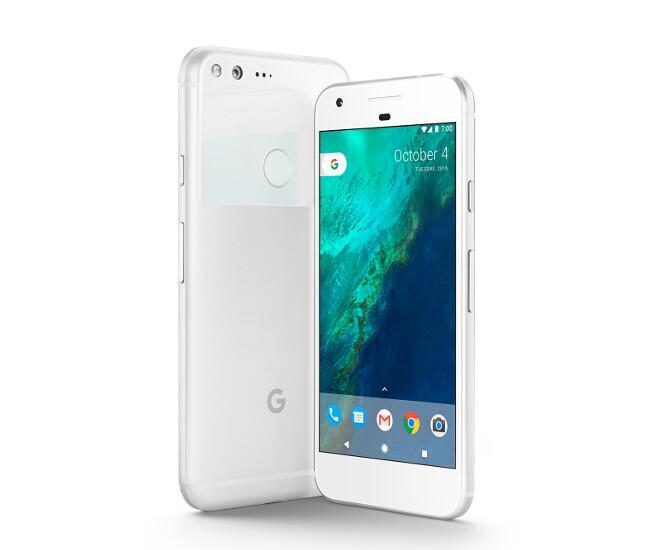Qualcomm emerges big winner at Google’s event
Article By : Rick Merritt

As many as five of Qualcomm's chips are inside the Pixel phones, the Snapdragon 821, two PMICs, an audio codec and a Wi-Fi/Bluetooth combo chip.
« Previously: Google courts OEMs to embed smart assistant
At its press event in San Francisco's Ghirardelli Square, Google shows how it had closely studied Apple to extract its core cache.
“People have strong emotional connections to the devices in their lives,” said Rick Osterloh, a senior vice president of Google’s hardware group who now reports to Foster.
“This is the right time to be focused on hardware and software…The next big innovations will take place at the interception of hardware and software with AI at the centre,” said Osterloh, the former head of Motorola Mobility.
![[Google Rick Osterloh]](/wp-content/uploads/sites/2/2020/04/Google_RickOsterloh.jpg)
__Figure 1:__ *Hardware and software combine to deliver smart services, said Osterloh.*
Qualcomm was a big winner at the event. As many as five of its chips are inside the Pixel phones, the Snapdragon 821, two PMICs, an audio codec and a Wi-Fi/Bluetooth combo chip. The Pixel’s camera relies in part on vector extensions in the Snapdragon’s imaging processing block as well as its Fluence noise-cancelling software.
The Pixel’s 12.3MP, f/2.0 aperture camera outscored the Apple iPhone7 in a ranking by DXO Mark, despite not using Apple’s dual-lens approach. It uses a high dynamic range setting by default and can automatically create the best of a series of burst shots.
The new Google Photos app sports a number of bells and whistles. Its video stabilisation routine samples images 200 times a second.
To attract iPhone users, Google will provide unlimited cloud storage for full resolution photos. It includes an adapter and tool to port from an iPhone personal information such as contacts. The company also developed an equivalent of Apple’s FaceTime video conferencing app with Google’s own unique touches.
The phone's prices start at $649 for a version with a five-inch OLED display and 32GB storage. Google will provide it exclusively through Verizon in the U.S. and sell unlocked versions on the Web.
In an effort to leapfrog Samsung, the lead Android OEM, Google rolled out Daydream, its own VR headset and software. The $79 passive headset is 30% lighter than the competition and uses clothing-like fabrics for comfort.
Two capacitive sensors in the headset recognise when a phone is attached and automatically align the view based on calculated coordinates. A controller sports one 6- and one 3-axis position sensor.
Daydream demo programs from Google and third-parties were suitably immersive, sporting crisp graphics with fluid motions. Seventy titles are expected at launch.
One downside of Daydream is that users remain stationary: Rather than walk through a virtual world, you rely on the title’s producer to take you on a journey.
![[Google Daydream]](/wp-content/uploads/sites/2/2020/04/Google_Daydream.jpg)
__Figure 2:__ *Two capacitive sensors in the Daydream headset detect and align a smartphone.*
In addition, Google announced a 4K upgrade of its Chromecast Internet TV adapter. It has sold 30 million Chromecast devices to date with watch time on them up 160% in the past year, Google said. The $69 device supports HDR, Dolby Vision and an Ethernet port.
Google also rolled out a $129 Wi-Fi access point. Multiple APs work together automatically to choose, for example, non-interfering channels or can be controlled manually in an app.
« Previously: Google courts OEMs to embed smart assistant
Subscribe to Newsletter
Test Qr code text s ss


